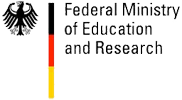| Foto | First Name | Last Name | Position |
|---|---|---|---|
 |
Marcus | Magnor | Graphics - Optics - Vision (Affiliated Independent Research Group) |
 |
Dominik | Michels | High Fidelity Algorithmics Group |
 |
Meinard | Müller | Multimedia Retrieval |
 |
Matthias | Niessner | Semantics and Geometry |
 |
Antti | Oulasvirta | Adaptive Multimodal User Interfaces |
 |
Sören | Pirk | Geometric Modelling |
 |
Erik | Reinhard | Color Image Processing |
 |
Tobias | Ritschel | Rendering and GPUs |
 |
Bodo | Rosenhahn | Marker-less Motion Capture |
 |
Bodo | Rosenhahn | Marker-less Motion Capture |
Researcher
 |
Dr. Michael Zollhöfer |
Visual Computing, Deep Learning and Optimization
| Name of Research Group: | Visual Computing, Deep Learning and Optimization |
| Homepage Research Group: | web.stanford.edu/~zollhoef |
| Personal Homepage: | zollhoefer.com |
| Mentor Saarbrücken: | Hans-Peter Seidel |
| Mentor Stanford: | Pat Hanrahan |
| Research Mission: | The primary focus of my research is to teach computers to reconstruct and analyze our world at frame rate based on visual input. The extracted knowledge is the foundation for a broad range of applications not only in visual effects, computer animation, autonomous driving and man-machine interaction, but is also essential in other related fields such as medicine and biomechanics. Especially, with the increasing popularity of virtual, augmented and mixed reality, there comes a rising demand for real-time low latency solutions to the underlying core problems. My research tackles these challenges based on novel mathematical models and algorithms that enable computers to first reconstruct and subsequently analyze our world. The main focus is on fast and robust algorithms that approach the underlying reconstruction and machine learning problems for static as well as dynamic scenes. To this end, I develop key technology to invert the image formation models of computer graphics based on data-parallel optimization and state-of-the-art deep learning techniques. The extraction of 3D and 4D information from visual data is highly challenging and under-constraint, since image formation convolves multiple physical dimensions into flat color measurements. 3D and 4D reconstruction at real-time rates poses additional challenges, since it involves the solution of unique challenges at the intersection of multiple important research fields, namely computer graphics, computer vision, machine learning, optimization, and high-performance computing. However, a solution to these problems provides strong cues for the extraction of higher-order semantic knowledge. It is incredibly important to solve the underlying core problems, since this will have high impact in multiple important research fields and provide key technological insights that have the potential to transform the visual computing industry. In summer 2019 Michael Zollhöfer joined Facebook. |
Researcher
- Name of Researcher
- Michael Kerber
- Homepage of Research Group
- First Name
- Michael
- Last Name
- Kerber
- Foto

- url_foto
- Homepage
- Phone
- Position
- Topological and Geometric Computing
- Mentor in Saarbruecken
- Kurt Mehlhorn
- Mentor in Stanford
- Leonidas Guibas
- Categories
- Former Groups
- Research Mission
- Past years have witnessed a growing demand for generally applicable methods to detect and quantify meaningful features in spatial data, for instance in two and three dimensional images or in high-dimensional point clouds. Recent developments look at such data through a topological lens: for instance, manifold reconstruction means to reveal the topological structure of a hidden manifold from a finite point sample. Another example is persistent homology which detects features like components, tunnels and voids, and also determines the scale on which the feature is present. The universality of the theory has turned computational topology into a vibrant research area with applications in image processing, sensor networks, cell biology, and astronomy. Typical in such applications is the interplay of topological methods with concepts from computational geometry, such as Delaunay triangulations or nearest neighbor search. <div> Our group is devoted to reveal further application areas of computational topology, to contribute to the algorithmic foundations to make such applications feasible in practice. This includes the exploration of further structural properties of the underlying topological and geometric concepts, the design and analysis of efficient algorithms to compute topological invariants, and the development of mature and generally applicable software packages.</div> Michael Kerber joined the Institute of Geometry at TU Graz in October 2015 as a full professor.
- mission_rtf
- Name of Research Group
Personal Info
- Photo

- Website, Blog or Social Media Link



